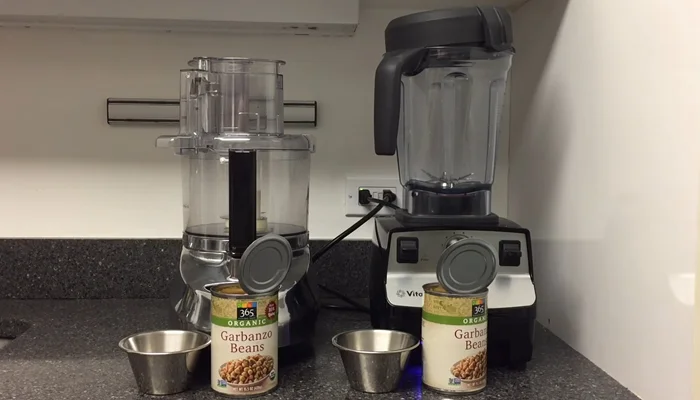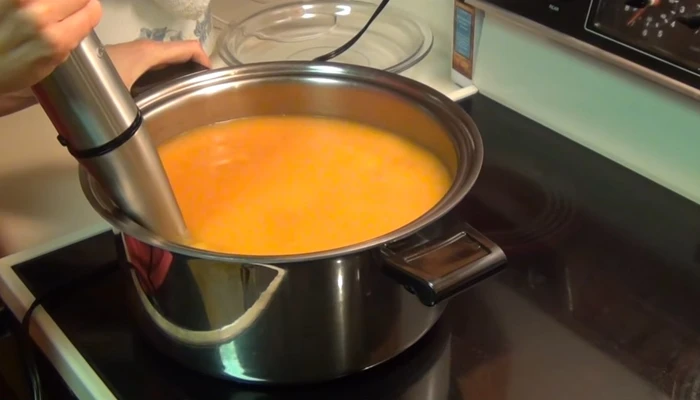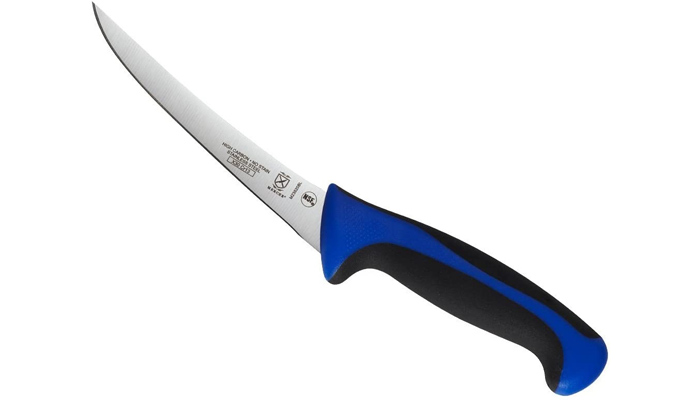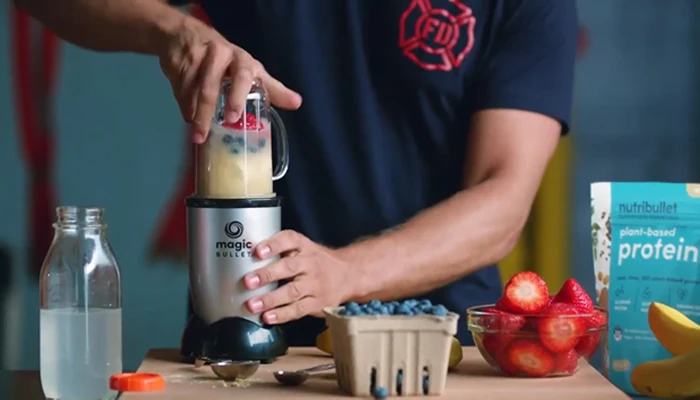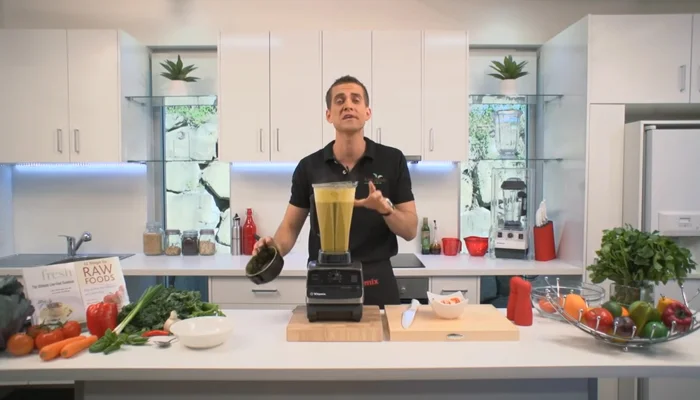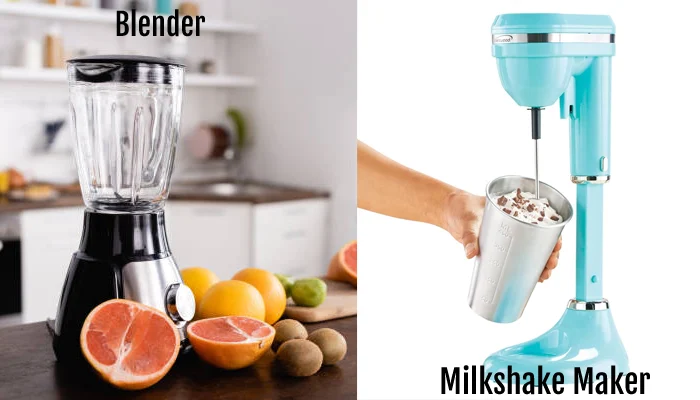Food Processor VS Blender for Hummus : Fully Explained
Hummus is a Levantine dish popular in many Middle Eastern and North African countries. It is made from cooked, mashed chickpeas or other beans, blended with tahini, olive oil, lemon juice, garlic, and salt. But what’s the best way to prepare this tasty dish, either using a food processor or a blender?
Ah, the great debate: food processor vs blender for hummus. For those who like their hummus extra smooth, maybe the best quality blender is the way. But if you want a little texture in your dip, a food processor is the better option.
Both have their merits, but in the end, it all comes down to personal preference. But there are some things to take into account when making your decision. Let’s discuss this in more detail through the following article.
What is Hummus and Where Does it Come from?
Before we talk about the differences between a food processor and a blender for hummus, let’s first discuss this dish.
Hummus has its origins in ancient Egypt and the Levant region, where it was traditionally made by hand using broad garbanzo beans, sesame seeds tahini, olive oil, lemon juice, garlic, salt, and cumin.
According to several historical sources, the earliest written mention of hummus was found in Egypt around the 13th century. Today, this dish is famous worldwide, with many variations and flavors.
This dish is an excellent source of protein, vitamins, minerals, and healthy fats. It can be used as a dip for vegetables or pita bread, or you can use it to make other dishes like falafel and croquettes.
So which is the better option: a food processor or blender? Let’s take a closer look at both options and discuss the pros and cons of each.
Food Processor VS Blender for Hummus – The Differences
Let’s take a closer at these two types of electrical appliances:
Food Processor:
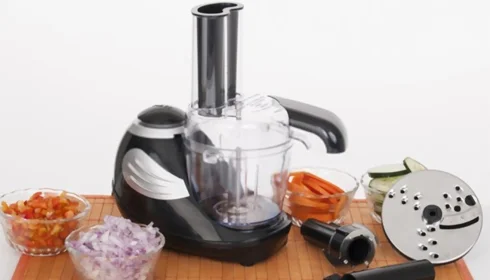
A food processor is a machine used for chopping, mixing, or grinding foods into small pieces. Its blade is typically made of metal and rotates at high speeds to churn the food inside a bowl.
This electric appliance is the combination of four-part or components as follows:
- Blades: This part does all of the chopping and mixing. It can be made from several materials, but metal blades are typically the most effective.
- Bowl: This holds the food while it is being chopped or mixed, and it needs to have a tight seal to prevent the food from spraying out.
- Lid: This is simply a cover that goes on top of the bowl to keep everything inside and protect your hands from the sharp blade.
- Motor base: This does all the work and powers the blades, so it needs to be powerful enough to handle whatever you are stirring or grinding.
A food processor is an excellent choice for many tasks, particularly when it comes to chopping, mixing, or grinding. It can handle things like bread crumbs and nuts, and other foods too tough or fibrous for a blender.
Blender:
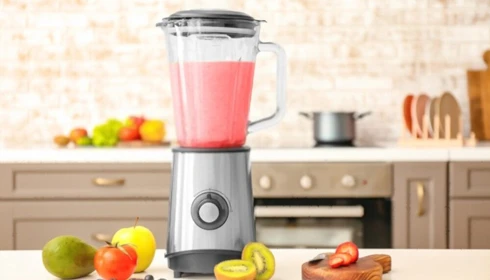
A blender is a machine used to blend ingredients into a smooth consistency, such as food or liquid. It simply combines the food or liquids placed inside it via spinning blades at high speeds.
A traditional blender will have four essential parts:
- Jar or container: This holds all of the ingredients while blended. Its shape and size will depend on the model of a blender, but most are tall and narrow.
- Blades: These are the sharp metal or plastic paddles that spin around at high speeds to chop up the food or liquid.
- Base: This base motor powers the blades and needs to be plugged into an outlet.
- Lid: This part goes on top of the jar to protect your hands from the spinning blades. Some covers also have measurement marks or filler caps built into them, so you can easily add ingredients while blending without taking off the lid.
Blenders are great for liquefying or pureeing certain foods, such as smoothies or soups. However, they can’t handle tasks too tough or fibrous for the blades to chop up, such as nuts or bread crumbs.
Overall, both a food processor and blender have their advantages in making hummus, but in food experts’ opinion, there are many differences between a food processor and blender for making hummus; some of the key ones include:
- Texture: A blender produces smoother hummus, while the best food processor (like Breville Sous Chef) tends to leave in some texture.
- Control: With a food processor, you have more precise control over the thickness and texture of your hummus. A blender is more likely to over-process the ingredients and turn them into a puree.
- Ease of use: A blender is generally easier to use than a food processor since you can simply add all ingredients into the jar and let it do its job.
- Creamy Blend: If you want extra creamy hummus, a food processor is a way to go. The blades in a blender can sometimes add air to the mixture and make it lighter and fluffier.
- Smoother: If you want entirely smooth hummus with no chunks, a blender will give you that result more effectively than a blender.
- Chunky: On the other hand, if you prefer your hummus to have some chunks for texture, a high-quality blender is a better option since it won’t break them down as much.
The choice between a food processor or blender for making hummus will depend on your personal preferences and what kind of texture you’re looking for. Experts agree that a high-quality blender is the best choice because of its precision, ease of use, and ability to produce smoother hummus.
So, if you are looking for perfectly smooth hummus, the best blender (such as Vitamix blender) is probably your best bet. But if you prefer having some texture in your dip, a food processor might be the better choice.
Things to Consider When Making Your Decision
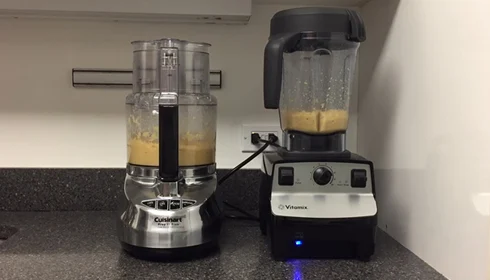
There’s a proverb that says, “The best cook is the one who can adapt to any situation.” When it comes to making hummus, that could very well be true.
While there are some critical differences between a food processor and blender for making this dip, there are also a few things you’ll want to keep in mind no matter which appliance you choose. These include:
Your budget:
A good blender or food processor can be a significant investment, so it’s essential to think about how much you are willing or able to spend on this kitchen tool.
The Size of the Recipe:
If you only need to make a small batch for yourself or your family, a basic blender or food processor might be all you need. But if you’re making hummus for a large gathering or event, you might want to consider getting an extra-large model with more power.
Your Cooking Preferences:
Do you prefer the ease of using a blender and just adding all your ingredients into one jar? Or would you rather have precise control over chopping up each ingredient in a food processor?
Cleaning:
Some people find blenders are easier to clean since you can just put all the parts in the dishwasher. However, food processors usually have more nooks and crannies where food can get stuck, so that they might require more scrubbing by hand.
Your Desired Texture:
Whether you choose to use a blender or food processor, your final texture will ultimately come down to how finely you chop up the ingredients and how long you process them.
If you prefer smooth hummus with no chunks, then a blender might be better. But if you like some texture in your hummus, a food processor might be ideal.
Once you’ve considered these factors, you can decide whether a food processor or blender is the best choice for making your favorite hummus recipes.
How to Prepare a Delicious Hummus Recipe
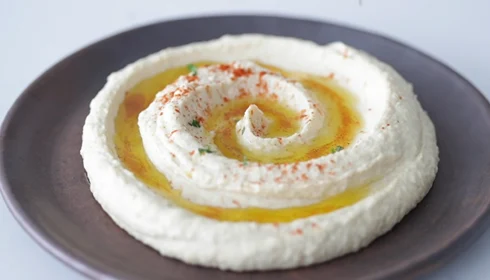
Making hummus at home is easy, and the best part is that you can customize it to your taste. Try out different flavor combinations and textures until you find the perfect recipe.
Ingredients you will need for the best hummus recipe:
- 30 oz canned chick peas drained with liquid reserved
- 1/4 cup olive oil
- 1/3 cup chick pea liquid, or extra, as needed
- 1 tsp cumin
- 1/2 cup tahini
- 2 garlic cloves
- 2 lemons, juiced
- 1/2 tsp salt
- Fresh parsley
- Paprika
Here are a few steps to get you started:
Step 01: Choose the Proper Ingredients:
The quality of your ingredients is vital for making delicious hummus. Use fresh, high-quality chickpeas, tahini, olive oil, and lemons.
Step 02: Soak the Chickpeas:
If you’re using dried chickpeas, soak them in water overnight before using them in your recipe. This will help to soften them and make them easier to blend.
Step 03: Drain the Chickpeas:
After soaking, drain the chickpeas and reserve the liquid. You’ll need this later on to thin out the hummus if it’s too thick.
Step 04: Add the Ingredients to a Blender:
Add chickpeas, tahini, olive oil, lemon juice, roasted garlic clove, cumin, and salt to a blender. Blend until smooth. It will take up to 30 seconds to fully incorporate all the ingredients.
Step 05: Add the Reserved Liquid:
If your hummus is too thick, add some of the reserved chickpea liquid until it reaches the desired consistency.
Step 06: Taste and Adjust as Needed:
Now, it’s time to taste your hummus and make the necessary adjustments. Add additional salt, lemon juice, or cumin if it needs more flavor. If it’s too thick, add more chickpea liquid until it reaches the desired consistency.
Step 07: Serve and Enjoy:
Serve your hummus with a drizzle of olive oil, a sprinkle of paprika, and some fresh parsley leaves.
Bu following these steps, you can easily prepare your delicious hummus recipe at home. Whether you’re looking for a smooth and creamy texture or something with more consistency, there are endless possibilities to experiment with when it comes to this tasty dish.
Tips for Making the Best Hummus Recipe
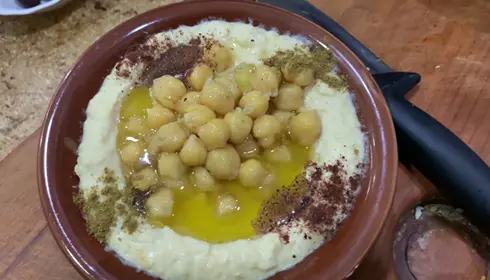
If you’re looking for tips on how to make the best hummus recipe, here are a few tips to keep in mind:
01. Use high-quality ingredients:
The quality of your ingredients is essential for making delicious hummus. Use fresh, high-quality chickpeas, tahini, olive oil, and lemons.
02. Soak the chickpeas:
If you’re using dried chickpeas, soak them in water overnight before using them in your recipe. This will help to soften them and make them easier to blend.
03. Choose the right equipment:
Not all types of equipment are created equal, so be sure to choose one that has a large container and can blend your ingredients smoothly.
04. Experiment with spices:
Hummus is delicious when you add in some chopped garlic or fresh herbs like parsley or cilantro. Be sure to experiment a little bit until you find the perfect combination of spices that you enjoy.
05. Serve with fresh veggies:
Hummus is a delicious dip for raw or roasted vegetables. Try serving your hummus with sliced carrots, snap peas, cucumbers, cauliflower, and other crunchy veggies for a healthy snack or appetizer.
With these tips in mind, you should be able to make the best hummus recipe in no time. Whether you’re new to cooking or a seasoned pro, these tips will help you create your perfect hummus every time.
FAQs
Let’s take a look at some frequently asked questions about making hummus with a food processor or blender:
1. Can You Use a Blender to Substitute for a Food Processor?
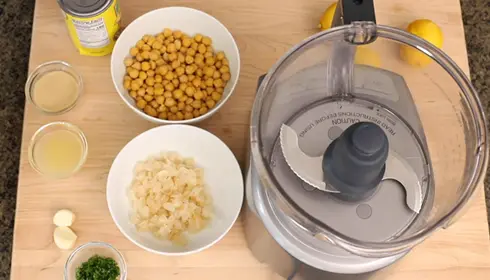
Yes, you can use a blender to substitute for a food processor in most recipes. However, remember that blenders tend to create a smoother texture than food processors. If you’re looking for a more textured hummus, you may want to stick with using a food processor.
2. Is It Better to Use Fresh or Canned Chickpeas for Hummus?
Both fresh and canned chickpeas will work well for hummus. Freshly cooked chickpeas will enhance the flavor of the hummus by giving it a clean, nutty taste rather than the metallic taste from canned chickpeas. Although canned beans can be used to make hummus, they are not as flavorful.
3. Can I Store Hummus in the Fridge?
Yes, you can store hummus in the fridge for up to 7 days. So even though you can store hummus in the refrigerator for a few months unopened, you just have seven days after opening to consume it.
4. How Long Will Homemade Hummus Last?
Homemade hummus recipes can last up to 3-4 days. If you want it to last longer, you can freeze it for up to two months. Just be sure to thaw it in the fridge overnight before serving.
In Conclusion
Hummus is a delicious dip that can be enjoyed with fresh or roasted vegetables. With these tips in mind, you should be able to make the best recipe for hummus in no time.
You can either use a food processor or a blender to make your ideal hummus, so experiment with different ingredients and spices until you find a recipe that you love.
Whether you’re new to cooking or a seasoned pro, these tips in this article, “Food processor vs blender for hummus” will help you create your perfect hummus every time.
